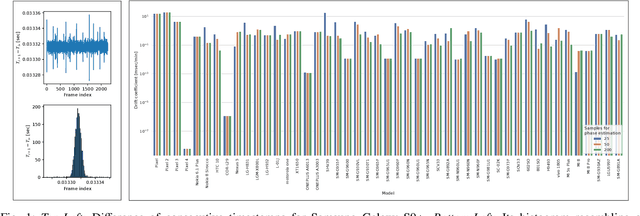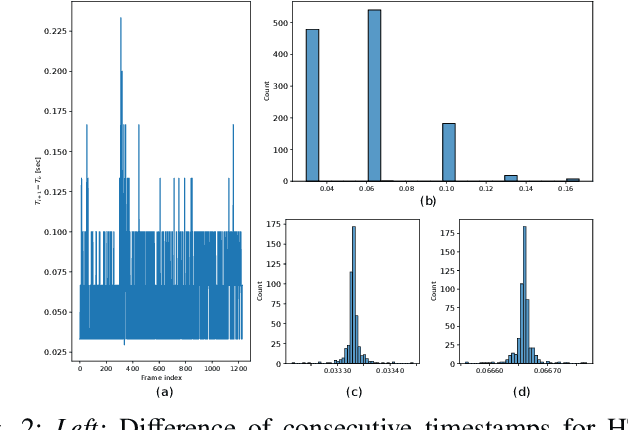David Pozo
Sub-millisecond Video Synchronization of Multiple Android Smartphones
Jul 02, 2021

Abstract:This paper addresses the problem of building an affordable easy-to-setup synchronized multi-view camera system, which is in demand for many Computer Vision and Robotics applications in high-dynamic environments. In our work, we propose a solution for this problem - a publicly-available Android application for synchronized video recording on multiple smartphones with sub-millisecond accuracy. We present a generalized mathematical model of timestamping for Android smartphones and prove its applicability on 47 different physical devices. Also, we estimate the time drift parameter for those smartphones, which is less than 1.2 millisecond per minute for most of the considered devices, that makes smartphones' camera system a worthy analog for professional multi-view systems. Finally, we demonstrate Android-app performance on the camera system built from Android smartphones quantitatively, showing less than 300 microseconds synchronization error, and qualitatively - on panorama stitching task.
Segmentation and Defect Classification of the Power Line Insulators: A Deep Learning-based Approach
Oct 15, 2020



Abstract:Power transmission networks physically connect the power generators to the electric consumers. Such systems extend over hundreds of kilometers. There are many components in the transmission infrastructure that require a proper inspection to guarantee flawless performance and reliable delivery, which, if done manually, can be very costly and time consuming. One essential component is the insulator. Its failure can cause an interruption of the entire transmission line or a widespread power failure. Automated fault detection could significantly decrease inspection time and related costs. Recently, several works have been proposed based on convolutional neural networks, which address the issue mentioned above. However, existing studies focus on a specific type of insulator faults. Thus, in this study, we introduce a two-stage model that segments insulators from their background to then classify their states based on four different categories, namely: healthy, broken, burned/corroded and missing cap. The test results show that the proposed approach can realize the effective segmentation of insulators and achieve high accuracy in detecting several types of faults.
 Add to Chrome
Add to Chrome Add to Firefox
Add to Firefox Add to Edge
Add to Edge